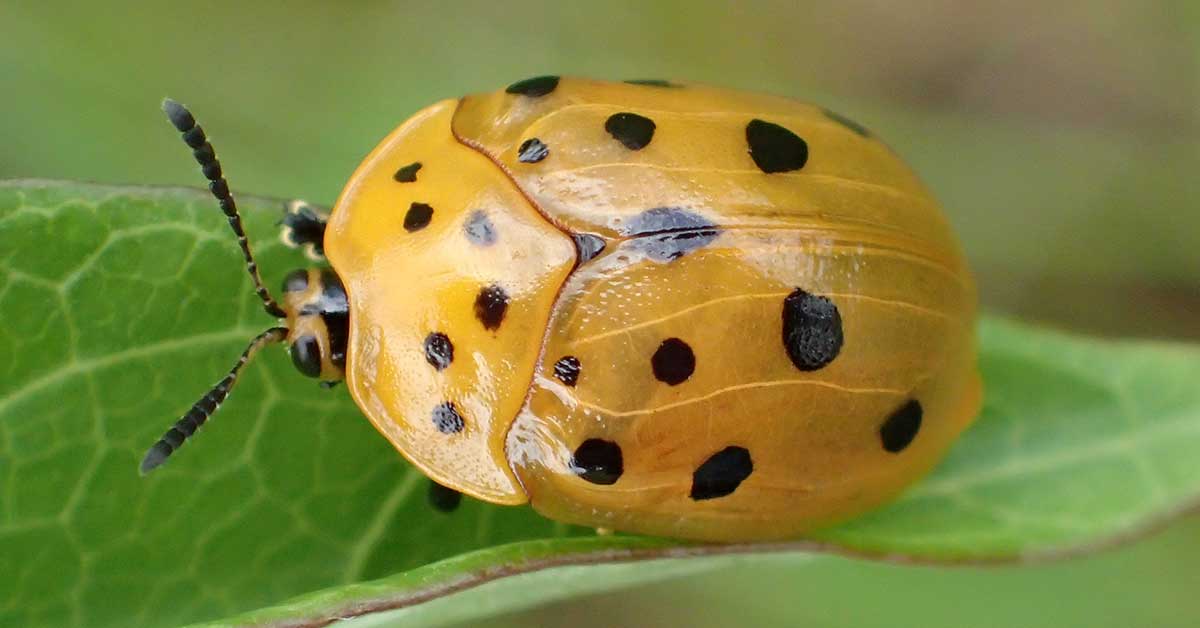There are few things more frustrating to a gardener, beginner or experienced, than finding out your garden is being consumed by some unwanted pest. Nature has a way of throwing a wrench into our plans, but take a bit of comfort in knowing that, if your garden is being eaten by something, it’s a healthy garden part of a larger ecosystem. Still, pests are a real bummer. One such pest is the tortoise beetle. Tortoise beetles are a type of insect that targets plant leaves and can cause major damage and reduce crop yields.
In this article, we’ll get to know these little pests a little bit better and discuss how we go about getting rid of them in a natural, organic way.
What are tortoise beetles?
If you want to beat the beetle, you need to know the beetle. Tortoise beetles, sometimes called leaf beetles or leaf-mining beetles, are small beetles from the Cassidinae family of insects that enjoy devouring plant leaves. They are typically colorful or metallic in appearance. They have hard wing covers on their backs in order to protect them from predators and damage, which makes them a bit harder to get rid of.
Their larvae are small with dark heads and are typically brown, green, or yellow. The larvae are known to ‘glue’ materials to themselves in order to harden their bodies and protect against predators.
What plants do they eat?
Tortoise beetles tend to go after specific types of crops in your garden, although their interests tend to be pretty narrow. You are most likely to see these pests enjoying the following plants. In particular, they tend to do the most damage to sweet potatoes, but can also be found on:
- Corn
- Milkweed
- Eggplants
- Strawberries
- Raspberries
- Cabbage
How to get rid of tortoise beetles
Tortoise beetles can be controlled in a number of ways. The way you go about getting rid of tortoise beetles, however, is important. They can be controlled with insecticides, but you compromise the organic nature of your garden and potentially your own health. Insecticides also target beneficial insects, like ladybugs and praying mantises. This is definitely not ideal.
Something else to consider: if your garden has a history of problems with tortoise beetles, pay special attention to your plants early in the season. These pests can do the most damage to new plants, more so than mature, adult plants. Generally, a tortoise beetle infestation will do minimal damage to adult plants and are less of a concern.
If your plants are being targeted by tortoise beetles and you can’t stomach the idea, your best bet is to skip the sprays and go right for the old-fashioned squishing method. They are tough beetles, but not impossible to kill. Give them a good squeeze and you will put an end to their warpath in your garden.
And that’s pretty much all there is to dealing with these bugs! If they continue to pose a major issue, consider cleaning up weeds in and around your garden, keeping grass and weeds cut back as low as you can, and remove dead foliage from your garden plants that the insects may enjoy hiding in or eating. And just keep checking your plants daily, even multiple times a day, and squishing the tortoise beetles you find.













